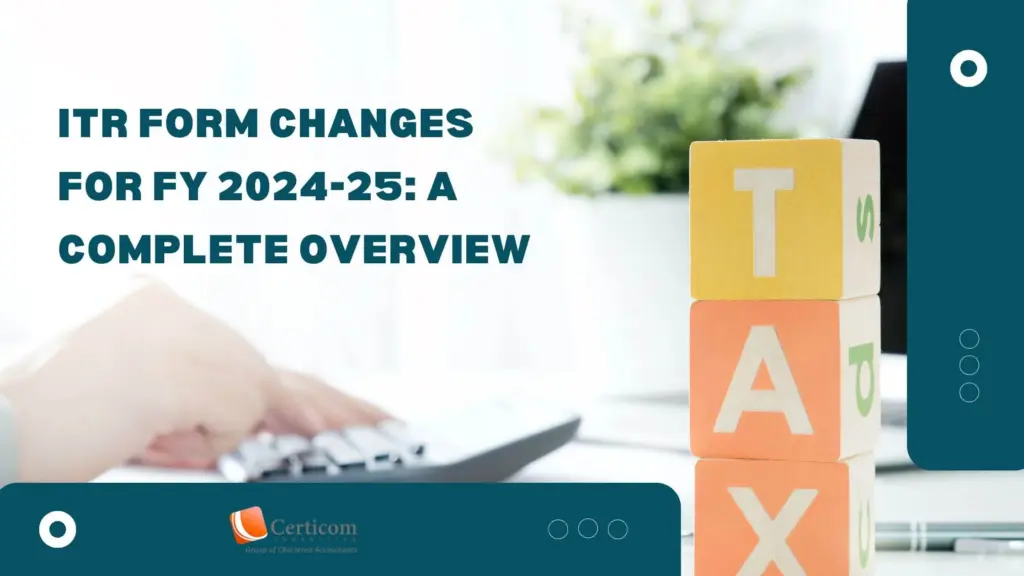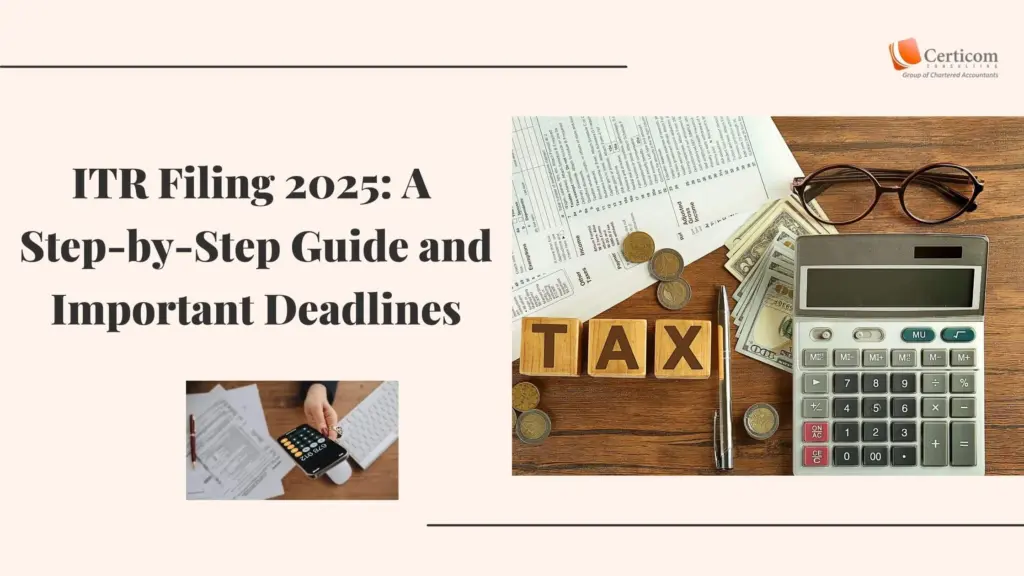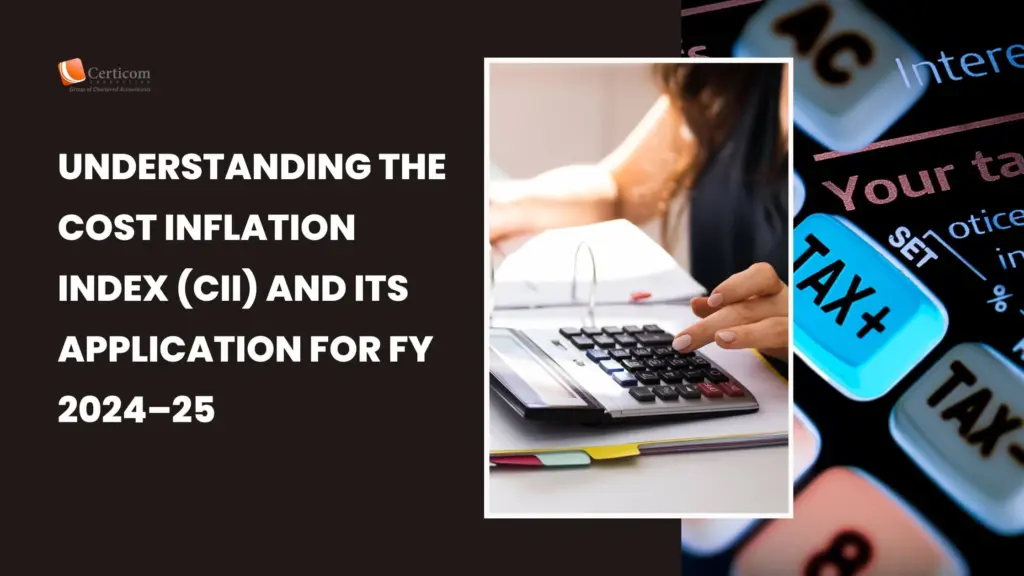ITR Form Changes for FY 2024-25: A Complete Overview

The Income Tax Department has notified revised Income Tax Return (ITR) forms for the Assessment Year (AY) 2025-26, reflecting significant changes aimed at improving transparency, compliance, and user experience. From capital gains reporting to revised tax regime disclosures and new deductions, taxpayers across different income categories and entity types need to pay close attention to the updates.
Common Highlights Across Multiple ITR Forms
New Tax Regime as Default: The new tax regime is now the default selection across most forms. Taxpayers choosing the old regime must file Form 10-IEA and specify a valid reason (except ITR-2, which provides a checkbox option).
New Deduction – Section 80CCH: A new deduction under Section 80CCH has been introduced for contributions made to the Agniveer Corpus Fund, applicable across ITR-1 to ITR-4.
Reporting of Interest on Income Tax Refunds: All major forms (ITR-2, 3, 4, and 6) now require disclosure of interest received on income tax refunds under the “Income from Other Sources” (IFOS) head.
Pass-Through Income Reporting: Forms ITR-2, 3, 5, and 6 now feature a dedicated section to disclose pass-through income from REITs, InvITs, and Category I & II AIFs.
RNOR Specifics: Taxpayers with the “Resident but Not Ordinarily Resident” (RNOR) status must report the number of days stayed in India during the current and preceding four years (in ITR-2, 3, and 4).

Form-Wise Changes:
ITR-1 (Sahaj)
Capital Gains Reporting: Allows declaration of long-term capital gains (LTCG) from listed shares and equity mutual funds up to ₹1.25 lakh.
Tax Regime Selection: New regime is default. To opt for the old regime, filing Form 10-IEA with reasons is mandatory.
Standard Deduction Enhanced: Increased from ₹50,000 to ₹75,000.
Section 80CCH Deduction: Available for contributions to the Agniveer Corpus Fund.
Refined Exempt Income Disclosure: Enhanced categorization of exempt income, especially agricultural income (alerts triggered for amounts above ₹5,000).
Detailed Disclosure Requirements: Income types such as clubbed income, family pension, PF withdrawals, gratuity, leave encashment, and dividend income require clearer reporting.
ITR-2
LTCG Exemption Limit Raised: Increased from ₹1 lakh to ₹1.25 lakh.
New Regime is Default: Old regime can be selected via a checkbox (no Form 10-IEA required).
RNOR Disclosure Mandate: Number of days in India to be disclosed for RNOR classification.
Section 80CCH Deduction applicable.
Pass-Through Income: New section for REITs, InvITs, and AIFs.
IFOS Income: Interest on tax refunds must be reported.
ITR-3
Tax Regime: Default is the new regime; opting for the old one requires Form 10-IEA and reason.
Cash Receipts: A new field captures cash receipts from business/profession.
RNOR Disclosure and Section 80CCH Deduction.
Mandatory for VDA Income: Taxpayers earning from Virtual Digital Assets (VDA) must file ITR-3 only.
IFOS Interest & Pass-Through Income Reporting.
ITR-4 (Sugam)
Section 44ADA Restriction: Now applicable only to individuals; HUFs excluded.
Tax Regime: Default is the new regime; opting for old regime mandates Form 10-IEA and reason.
Schedule BP Update: Must report cash receipts.
Section 80CCH Deduction applicable.
RNOR Disclosure required.
Restriction for Foreign Ties: Taxpayers with foreign company associations cannot file ITR-4.
ITR-5
Disclosure of Chosen Regime: Sections 115BA, 115BAA, 115BAB, 115BAD, and 115BAE now included. Relevant forms like 10-IB/10-IC/10-IF/10-IFA must be furnished.
Pass-Through Income Reporting for REITs, InvITs, and AIFs.
ITR-6
Pass-Through Income: Separate section for REITs, InvITs, and AIFs.
Interest on Refund: To be reported under IFOS.

ITR-7 (for Trusts, Charitable Institutions, Political Parties, etc.)
FCRA Compliance: Mandatory reporting of FCRA registration number and foreign contributions.
Expense Breakup: Religious/charitable expenditure bifurcated into India-based and overseas.
Corpus Utilization Tracking: New schedule for utilization of corpus funds and loans.
Exemption Section Clarity: Taxpayers must specify the section under which exemption is claimed (e.g., 10(23C), 11, 12A, 13A) and provide supporting forms like Form 10 or 9A if applicable.
The ITR forms for AY 2025-26 reflect the Income Tax Department’s push for greater compliance, detailed disclosures, and seamless alignment with the new tax regime. Taxpayers—especially those with complex income streams, capital gains, foreign associations, or special entity status—should carefully evaluate their applicable form and prepare the required documentation well in advance.
Related Post
Understanding the Cost Inflation Index (CII) and Its Application for FY 2024–25
ITR Form Changes for FY 2024-25: A Complete Overview
Book A One To One Consultation Now For FREE
How can we help? *



